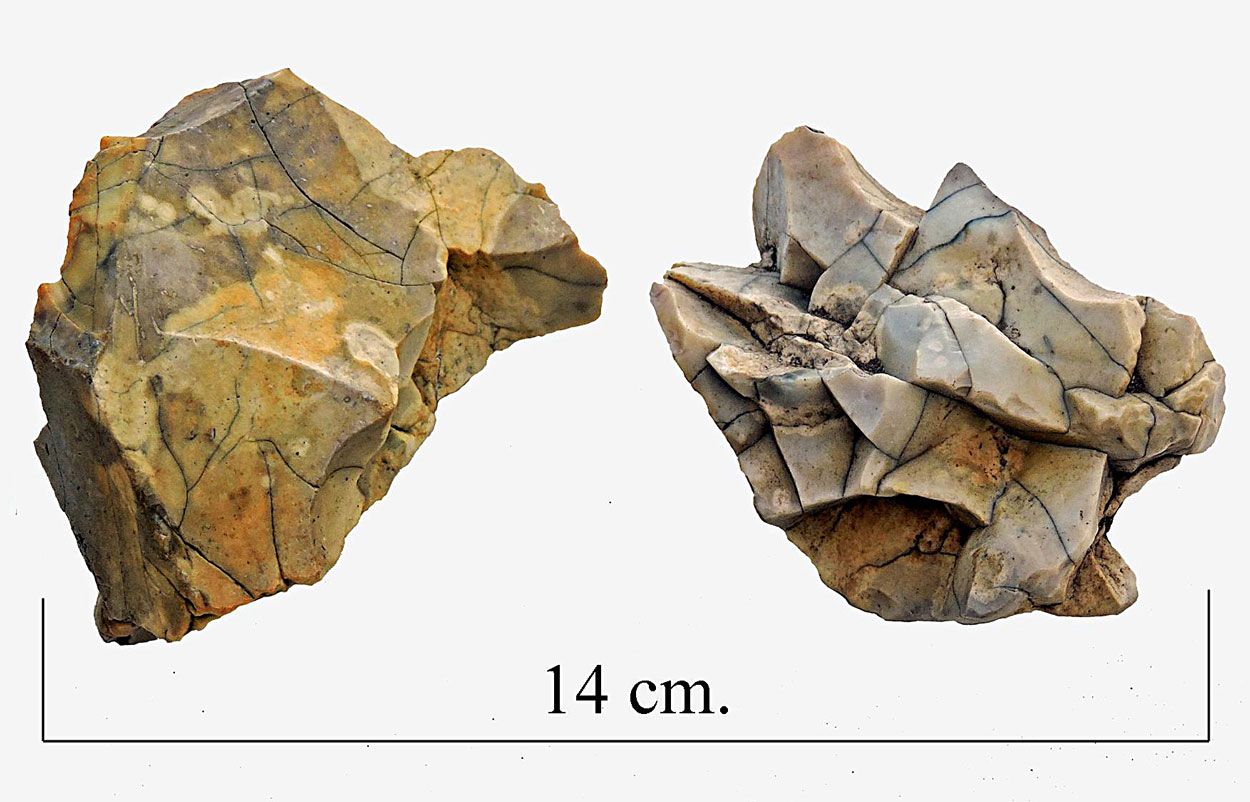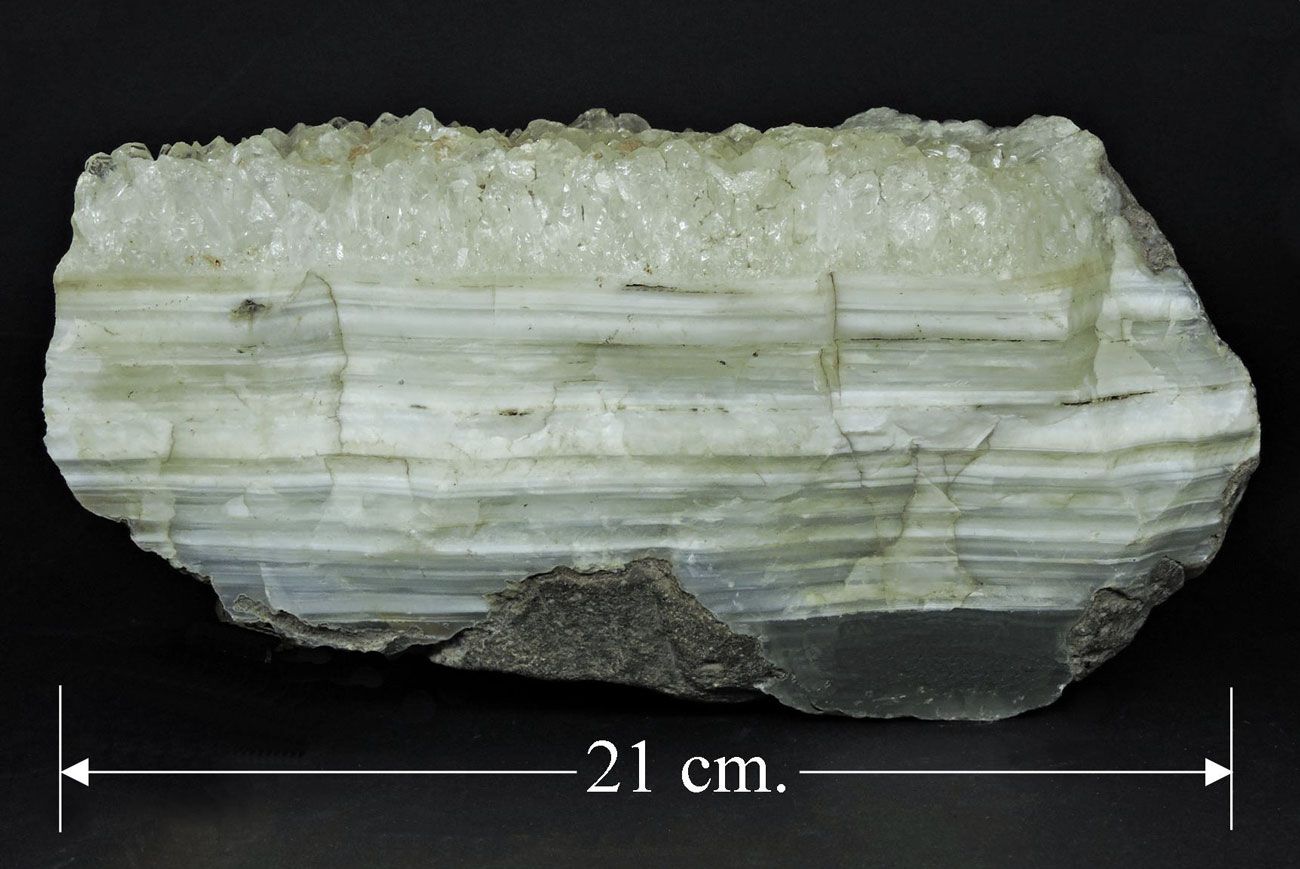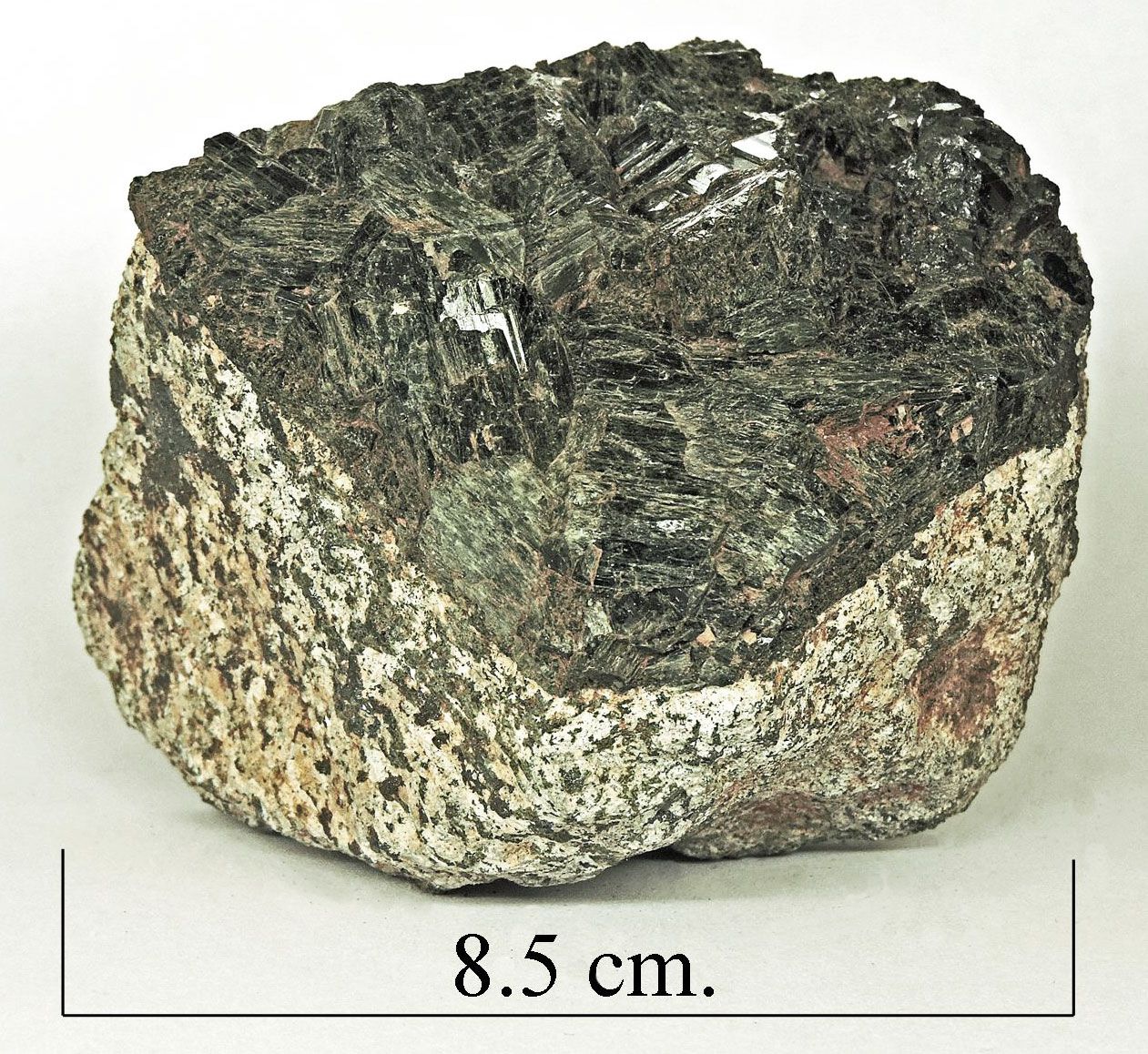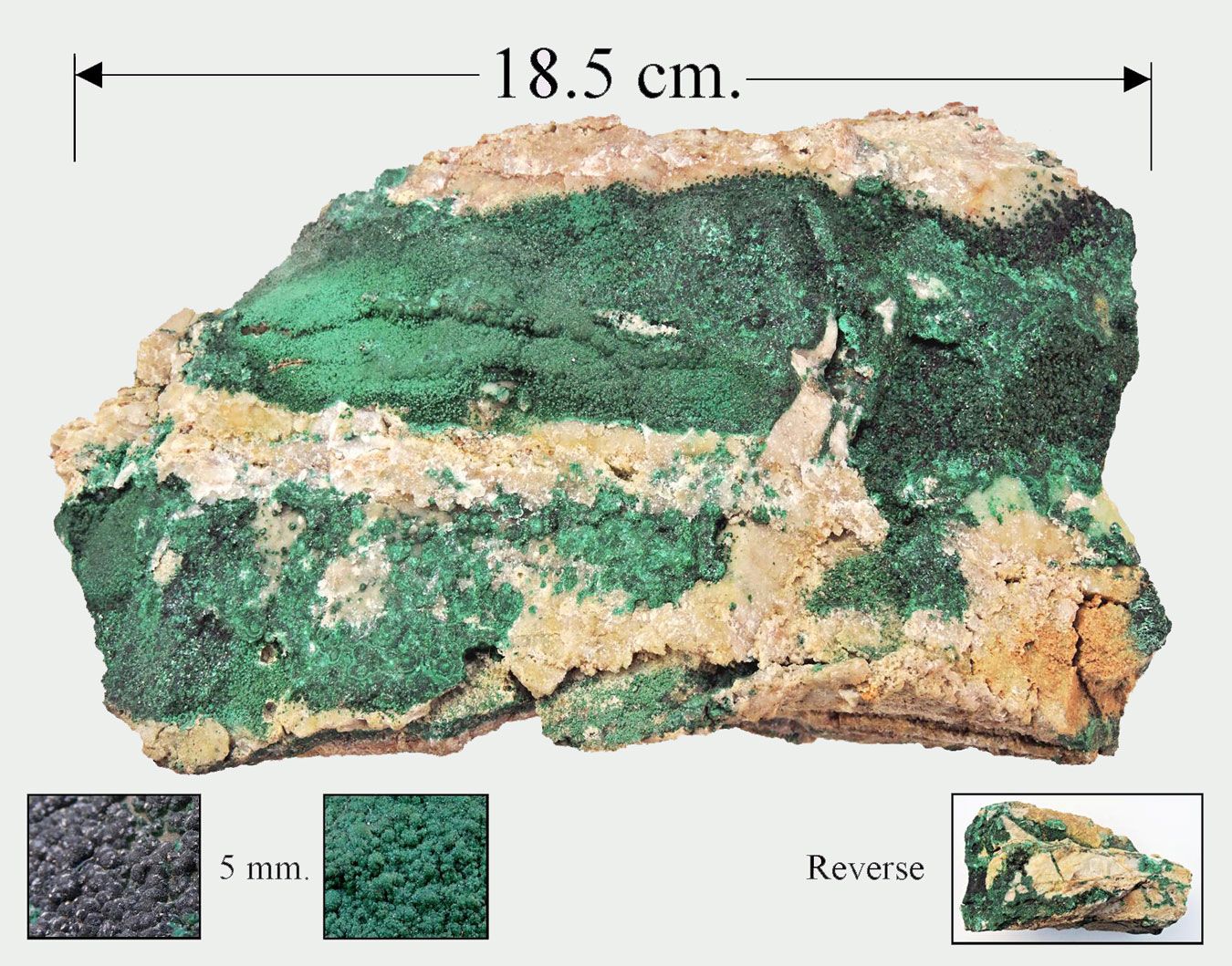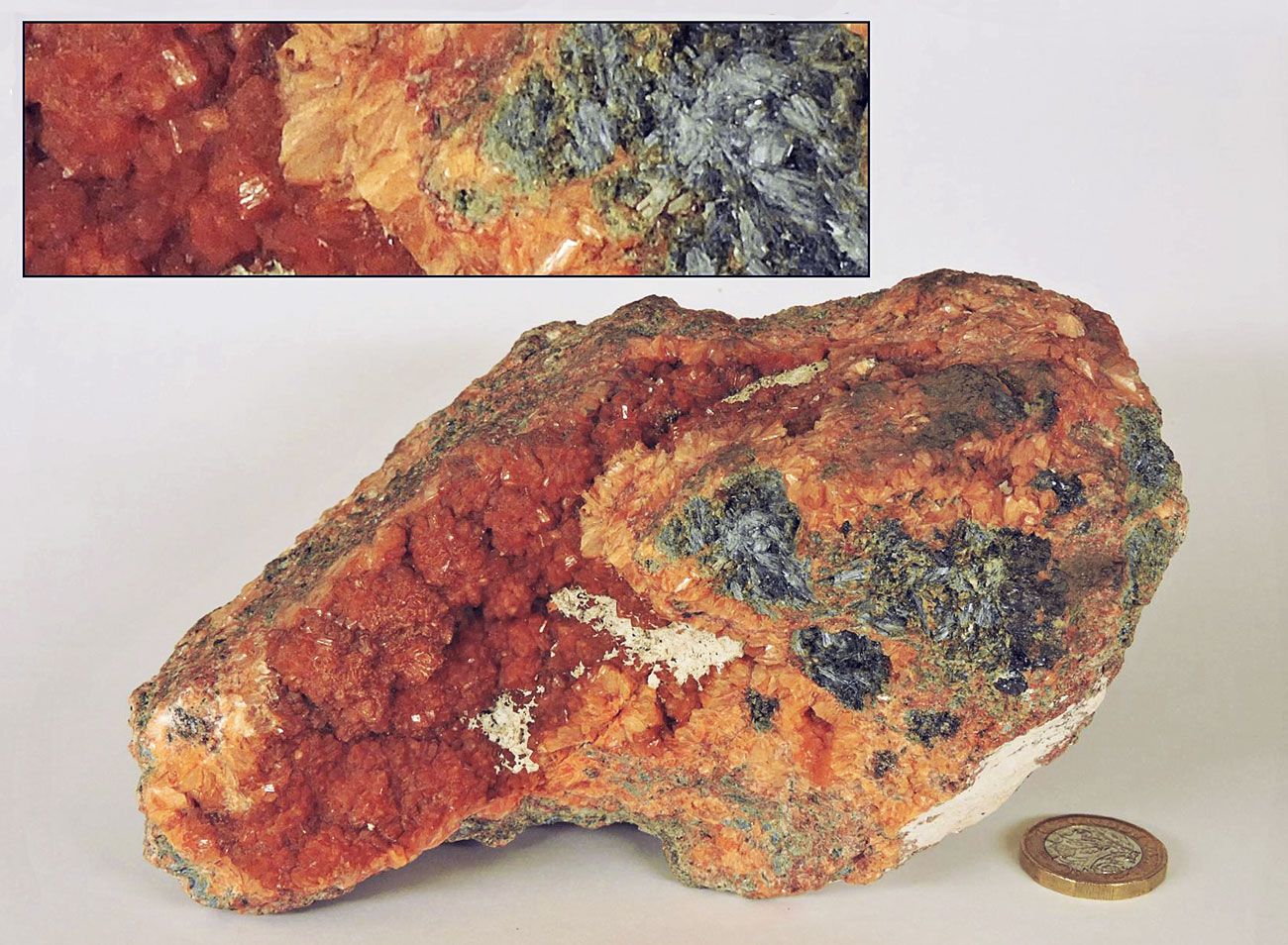
Stilbite with Actinolite
The main component of this specimen is stilbite, ( the orangey mineral ) with some actinolite, ( the dark mineral ) and a minor amount of laumantite. Stilbite, which is a serial name, is a zeolite, NaCa4Al9Si27O72 · 28(H2O) and actinolite is a very complex amphibole silicate mineral, with the formula Ca2(Mg,Fe)5Si8O22(OH)2 The white mineral which appears as a crust, with only a few minute crystals visible, is thought to be limontite, another zeolite mineral. The specimen was collected by the club co-founder Jim Nicholls from Arkaroola bore, South Australia.
